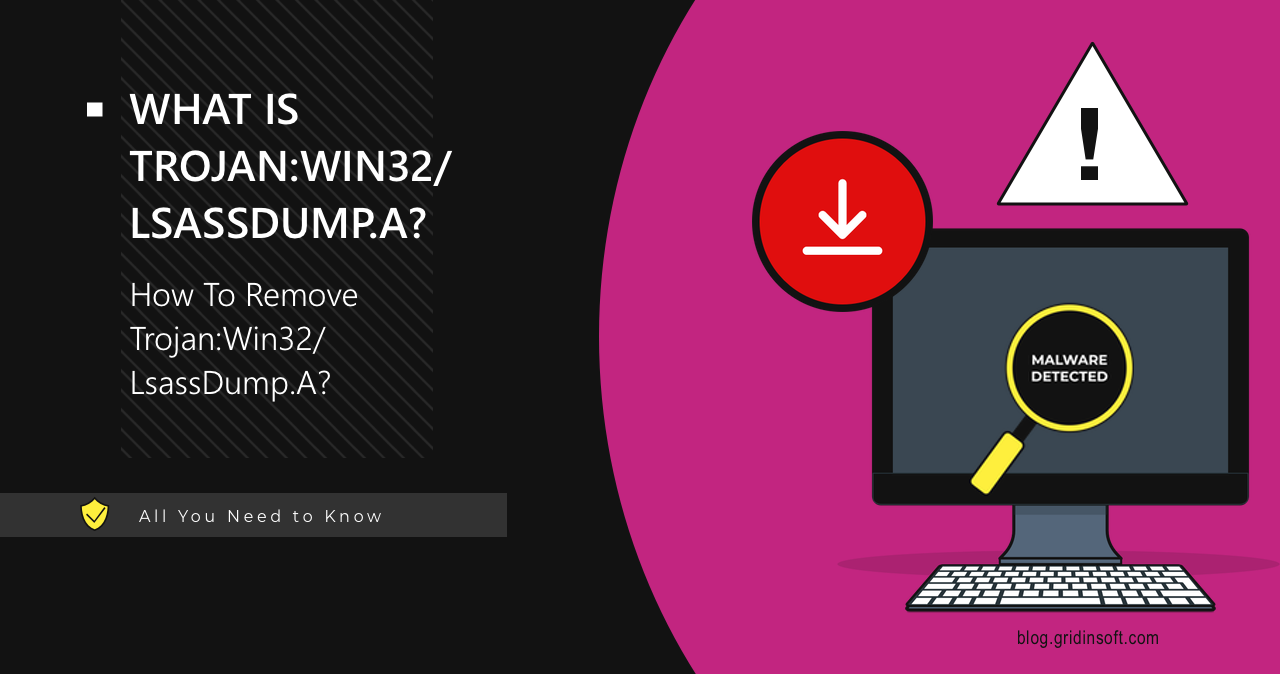Gridinsoft Security Lab
Trojan:Win32/Commandrob.A!ml Threat Analysis
Trojan:Win32/Commandrob.A!ml is a heuristic detection associated with suspicious network activity. It may refer to a wide range of malicious programs, or be a false positive detection. In this post, I will explain what it means and how you can check the system for possible viruses. Trojan:Win32/Commandrob.A!ml Overview Trojan:Win32/Commandrob.A!ml is an AI-based detection of Microsoft Defender. […]
Azurestaticapps.net
Azurestaticapps.net is a selection of pages registered on genuine Microsoft hosting, that try scaring the user by false malware infection claims. In fact, it is nothing but intimidation that ends up with a call to fake tech support, that eventually steals personal information or installs unwanted software. In this post, I will debunk all the […]
Trojan:Win64/Zusy.CZ!MTB
Trojan:Win64/Zusy.CZ!MTB is a detection of Microsoft Defender that can flag several different types of malware. Being a heuristic detection, it can as well be a false positive, with no real threat to the system. Let me explain in detail what this threat is about, and how to remove it. Trojan:Win64/Zusy.CZ!MTB Overview Trojan:Win64/Zusy.CZ!MTB is a Microsoft […]
Sec-tl Pop-Up Virus
Sec-tl pop-up ads are malicious push notifications that parasite legitimate browser functionality. Fraudulent actors that stand behind this chain of websites earn money by showing hundreds of ads in such a way. And those are not just regular ads: it is common to see scams and phishing sites among them. Let me explain how this […]
Trojan:Win32/LsassDump.A
Trojan:Win32/LsassDump.A is a detection that targets the LSASS process. Similar to other heuristic detections, it focuses on behavior rather than the file itself. Trojan:Win32/LsassDump.A Overview Trojan:Win32/LsassDump.A is a heuristic detection by Microsoft Defender, triggered by unauthorized access to the Windows LSASS process. As a heuristic detection, it flags attempts to access the process, particularly its […]
First-tl Pop-Up Virus
First-tl pop-up ads are malicious push notifications (like a Sec-tl sites) that parasite legitimate browser functionality. Fraudulent actors that stand behind this chain of websites earn money by showing hundreds of ads in such a way. And those are not just regular ads: it is common to see scams and phishing sites among them. Let […]
PUABundler:Win32/Rostpay
PUABundler:Win32/Rostpay is an antivirus detection related to the software released by Rostpay LLC. Antivirus programs detect it because it contains a lot of additional unwanted programs (PUA). Although their applications are not malicious, the software that comes bundled along with it can bring unpredictable consequences. As history shows software developers like Rostpay have already made […]
Altisik Service Virus Analysis & Removal
Altisik Service is a malicious coin miner that usually installs and runs on the target system without the explicit consent of the PC owner. It disguises itself as a Windows service, which makes it difficult to stop or remove. Let’s have a closer look at how this malware operates and how to delete it from […]
Trojan:Win32/Fauppod!ml
Trojan:Win32/Fauppod!ml is a detection that is based on machine learning and is assigned to an unspecified threat type. Usually such threats are identified by behavior rather than signatures. Nonetheless, this exact malware detection poses a serious hazard, as it appears to flag the activity of a targeted infostealer trojan. Trojan:Win32/Fauppod!ml Overview Trojan:Win32/Fauppod!ml is a generic […]
JsTimer Extension Virus – Easy Removal Instructions
JsTimer is a malicious browser extension detected in various browsers, predominantly targeting users through dubious websites. This extension engages in peculiar behavior by blocking access to the Chrome Web Store, which, although seemingly trivial at first, raises significant concerns when paired with other similarly distributed extensions. Malicious browser extensions are not a novel threat; however, […]
What is PUA:Win32/GameHack?
PUA:Win32/GameHack is potentially unwanted software associated with tools used for hacking games or gaining unfair advantages over other players. This category typically includes cheats, trainers, and other software that injects itself into other processes. PUA:Win32/GameHack Overview PUA:Win32/GameHack is a generic Microsoft Defender detection for potentially unwanted programs (PUAs) associated with cheats or game hacking tools. […]
Funny Tool Redirect Extension Virus – Easy Removal Instructions
Funny Tool Redirect is a malicious browser extension that you may see installed in your browser. It spreads through dodgy websites and does a rather unusual mischief: blocking access to the Chrome Web Store. While being not a big deal at a first glance, its unwanted appearance, along with other extensions (like JsTimer) that spread […]
















